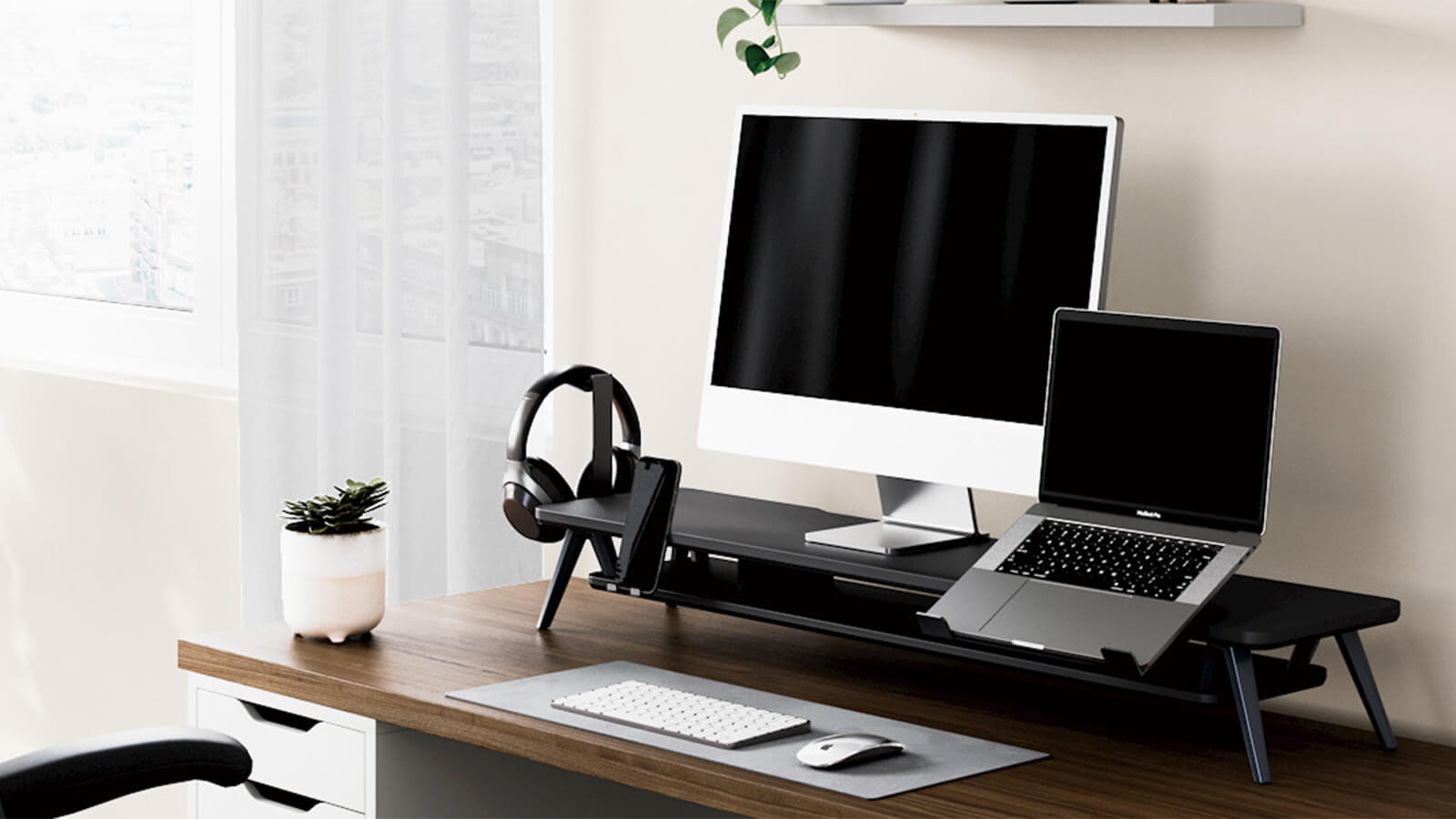I
n today’s digital age, how we sit and stand at our computers greatly affects our health and productivity. Good posture helps prevent musculoskeletal issues and boosts comfort. This article shares practical posture tips and ergonomic furniture recommendations to support your well-being.

Sitting Posture
When sitting in front of a computer, follow these guidelines to maintain good posture.
Chair and Desk Setup:
- Choose an ergonomic chair that supports your lower back and promotes proper alignment. Look for chairs with adjustable features.
- Consider using a desk shelf or monitor stand to raise your screen to eye level, reducing strain on your neck and promoting a more comfortable viewing position.
- Ensure your desk is at an appropriate height, allowing your forearms to rest parallel to the floor. Consider using an adjustable desk to accommodate different sitting positions.
Body Position:
- Sit with your back straight, aligning your shoulders with your hips.
- Keep your elbows bent at a 90-degree angle and close to your body.
- Avoid crossing your legs; instead, keep both feet flat on the floor or use a footrest.
Breaks and Movement:
- Take short breaks every 30 minutes to stretch and move around.
- Perform simple exercises, like shoulder rolls and neck stretches, to relieve tension.
- Consider using an anti-fatigue mat, which provides cushioning and encourages small movements while standing, promoting blood circulation and reducing fatigue.
Standing Posture
When standing in front of a computer, consider the following tips for maintaining a healthy posture.
Footwear:
- Wear comfortable shoes with adequate arch support to promote stability and reduce strain on your feet and legs.
Body Alignment:
- Stand tall with your shoulders back, aligning them with your hips.
- Keep your spine neutral, avoiding excessive arching or rounding of the back.
- Engage your core muscles to support your posture.
Leg Position:
- Distribute your weight evenly on both feet, with a slight bend in your knees.
- Avoid locking your knees, as it can lead to poor circulation and strain on your joints.
Monitor and Keyboard Placement:
- Position the computer screen at eye level using a monitor stand or adjustable arm.
- Use a standing desk or an adjustable platform to ensure the keyboard is at elbow height and your wrists are in a neutral position.
Movement and Stretching:
- Incorporate regular movement, such as shifting weight from one leg to another or taking short walks.
- Stretch your neck, shoulders, and back periodically to release tension and improve blood circulation.
Recommended Ergonomic Furniture and Accessories
To further support your posture and comfort, consider the following ergonomic furniture and accessories:
-
Standing Desks: Investing in a height-adjustable standing desk allows you to alternate between sitting and standing positions, promoting better circulation and reducing the strain on your back and legs.
-
Monitor Stands or Adjustable Arms: These accessories help raise your computer screen to eye level, preventing neck strain and promoting a more ergonomic viewing position.
-
Desk Shelves: Adding a desk shelf provides additional storage space and helps raise items like documents and stationery to a comfortable height, reducing strain on your neck and shoulders.
-
Ergonomic Chairs: Look for chairs specifically designed to support good posture, with adjustable features such as lumbar support, armrest height, and seat height.
-
Anti-Fatigue Mats: These mats provide cushioning and support for your feet while standing. They encourage subtle movements, which can help alleviate fatigue and improve blood circulation.
In conclusion, maintaining proper posture while sitting and standing in front of a computer is crucial for preventing discomfort and promoting overall well-being. By following the guidelines provided in this article and incorporating ergonomic furniture and accessories, such as adjustable desks, monitor stands, and anti-fatigue mats, you can optimize your comfort, reduce the risk of musculoskeletal issues, and enhance productivity. Remember to take regular breaks, stretch, and move around to support your muscles and maintain a healthy posture. Prioritize your posture for improved physical health and increased comfort while working at your computer.



Share:
Why Use a Monitor Stand? Desk Shelf Benefits Explained
7 Must-Haves for a Cozy and Healthy Home Office